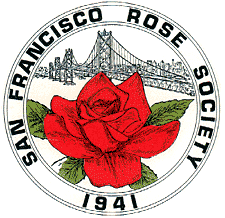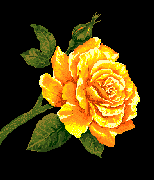 Rose Society's
Rose Society's
 Rose Society's
Rose Society's
 |  | RUST on ROSES |
|
Parts of this article are excerpted from an essay by Dr. L.M. Massey as they appeared in the Yearbook of Agriculture issue on Plant Diseases. The U.S. Department of Agriculture issues yearly publications on various concerns involving agriculture. Several of these books are of special value to the rose growers of our area. The article on Rust has special significance for rose growers in coastal California. Periodically the Rosarian feels the need to take a very serious look at some of the problems involved in growing roses. Rust is one such problem. About this time of year, we are seeing on the underside of rose leaves a fair quantity of small red/brown postules. The common name for this occurence is Rust. While some fifty types of this fungus exist, only one attacks the rose. Basically, the most severe outbreaks occur on the coast of California. It is most visible in the summer months; July and August figure as the peak infestation times. Rust thrives at temperature in the seventies; it does not survive into the ninety degree range. Obviously, in San Francisco we have the ideal conditions for Rust! What can we do about it? First, look several times weekly for signs. Since it can reproduce itself every fourteen days, we must maintain constant surveillance. A spraying program is most necessary. If you are an organic gardener, the best you can do is to use a product such as Volck or Supreme Oil. Don't even consider an insecticidal soap which will be of no value. Products such as Funginex, Daconil, and Systhane will control the problem if used every fourteen days (this writer prefers a weekly application). Sadly, the product known as Dipel is no longer available in California. If you are using Funginex, be sure to use it only rather than the product known as Orthinex (a combination of Orthene and Funginex). See note below. In the fall of the year, rust will change in color to black; these black spots will winter over until the following spring. The bottom line is that Rust is a nasty fungus and year-round care and surveillance are the only way for full control. NOTE: Orthinex as a product does not have the proper balance for a lot of our rose problems. The Orthinex aspect of the mix is far in excess of the funginex and if used too much, burn on the rose leaf will result.
|

|  |  |  |  |  |  |   |
|
|
|
| ||||